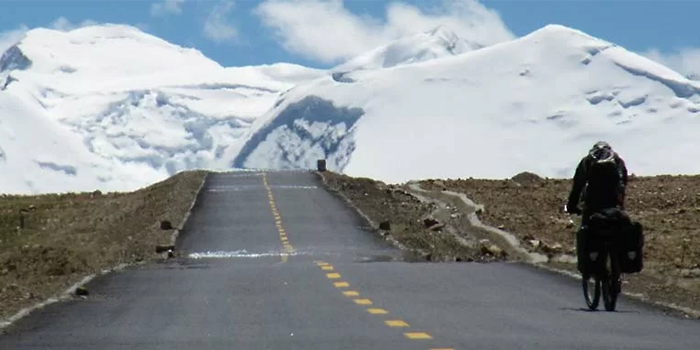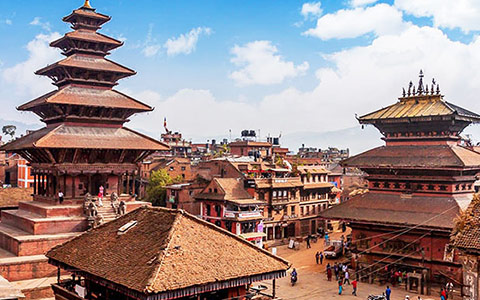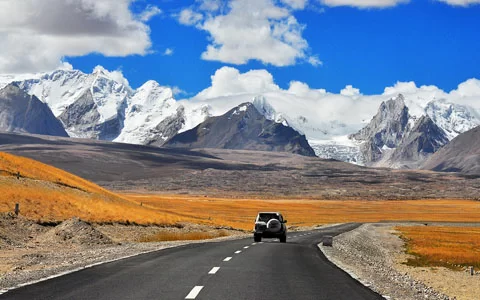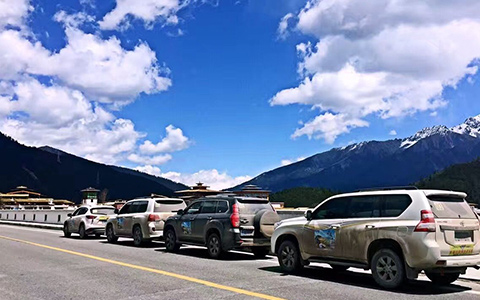Ultimate Guide to Lhasa to Kathmandu Cycling Tour: Pedal through the Spine of the World
Cycling from Lhasa to Kathmandu across the lofty Tibetan Plateau offers you one of the world’s most challenging and immersive ways to soak up amazing Himalayan views & sacred Buddhist vibes Tibet has to offer.
If you're considering crossing the Lhasa to Kathmandu cycling tour off your travel bucket list, we've got you covered!
In this tutorial, we will walk you through the ultimate guide to cycling from Lhasa to Kathmandu, ensuring that you are fully prepared for this epic ride from Lhasa to Kathmandu across the majestic Himalayas.
 Why Should I Cycle from Lhasa to Kathmandu
Why Should I Cycle from Lhasa to Kathmandu
 Is It Safe to Cycle from Lhasa to Kathmandu
Is It Safe to Cycle from Lhasa to Kathmandu
 The Best Cycling Route for Lhasa to Kathmandu Cycling Tour
The Best Cycling Route for Lhasa to Kathmandu Cycling Tour
 What Is the Best Season for Lhasa to Kathmandu Cycling Tour
What Is the Best Season for Lhasa to Kathmandu Cycling Tour
 Shall I Bring My Own Bike or Rent One for Lhasa to Kathmandu Cycling Tour
Shall I Bring My Own Bike or Rent One for Lhasa to Kathmandu Cycling Tour
 What to Eat for My Lhasa to Kathmandu Cycling Tour
What to Eat for My Lhasa to Kathmandu Cycling Tour
 Where to Stay during the Lhasa to Kathmandu Bike Tour
Where to Stay during the Lhasa to Kathmandu Bike Tour
 Is It Expensive for Lhasa to Kathmandu Bike Tour
Is It Expensive for Lhasa to Kathmandu Bike Tour
 How Should I Prepare for Lhasa to Kathmandu Bike Tour
How Should I Prepare for Lhasa to Kathmandu Bike Tour
 What Cycling Services Should I Choose for Lhasa to Kathmandu Cycling Tour
What Cycling Services Should I Choose for Lhasa to Kathmandu Cycling Tour
Why Should I Cycle from Lhasa to Kathmandu
Cycling from Lhasa to Kathmandu via the scenic Fiendship HWY allows you to travel at your own pace and easily venture out for off-the-beath paths leading to enchanting Tibetan villages and monasteries, inaccessible to a typical travel bus tour.
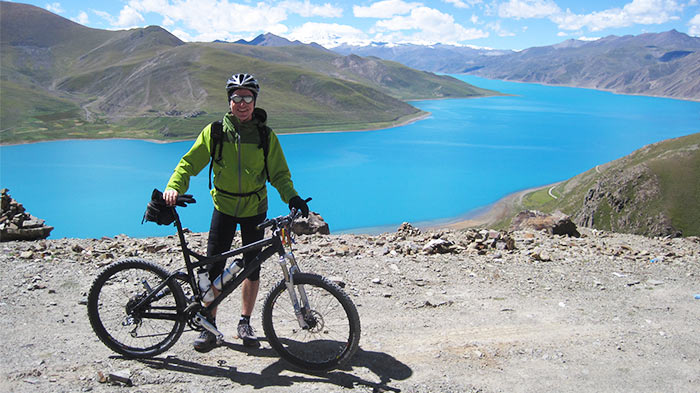 Cycle to turquoise Yamdrok Lake in Tibet.
Cycle to turquoise Yamdrok Lake in Tibet.
You can challenge yourself to pedal through high mountain passes, wind down past pristine alpine lakes, and traverse rugged Tibetan terrains, etc. On the way, you can grab a local snack straight out of the street, say hello to friendly Tibetan locals, and camp under the star-studded sky in the tranquil wilderness with your guides.
Surrounded by awe-inspiring Himalayan vistas and exotic Tibetan culture, you are free to pause, explore and reflect. As you push your limit to cycle to the Everest Base Camp, you will be rewarded with the jaw-dropping vista of the north face of Mount Everest before following a roller-coaster ride down to oxygen-rich Kathmandu Valley.
Is It Safe to Cycle from Lhasa to Kathmandu
Cycling from Lhasa to Kathmandu is much safer than you might expect. As international tourists can only visit Tibet through a pre-arranged guided tour, you will be cycling with the local Tibetan guide and support crew throughout your journey.
Altitude Sickness: The only challenge comes from how well you can acclimatize to the high elevation in Tibet as you are expected to cycle through mountain passes over 5,000 meters. Rest assured, your guide will consider this and ensure you are properly acclimatized before ascending to higher destinations.
Road condition & Traffic: Some sections of the route may have rough or unpaved roads, with narrow or winding stretches. You should be prepared for varied terrain and changing weather conditions. Besides, you need to be cautious, especially on shared roads with vehicles. No worries! There is less traffic after you cycle outside of Lhasa and Shigatse cities.
Medical Kits & Spare Parts: When cycling to remote areas, your guide will prepare medical kits and sufficient supplies, including water, food, and basic tools or repair kits, tents, meals, etc.
With an expert guide, thorough thoughtful preparation, backup plans, and a supportive crew by your side, your Lhasa to Kathmandu bike tour promises both safety and thrills.
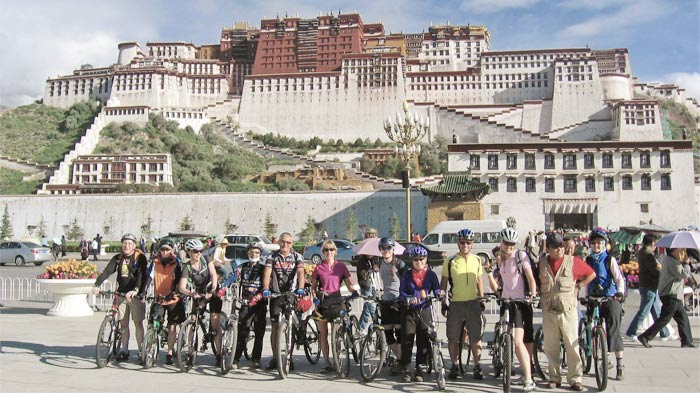 Ready to hit the road for bike tour from Lhasa to Kathmandu.
Ready to hit the road for bike tour from Lhasa to Kathmandu.
The Best Cycling Route for Lhasa to Kathmandu Cycling Tour
The Lhasa to Kathmandu cycling tour covers a total distance of 1080 kilometers over 16 days. After you stay in Lhasa for 3 days for acclimatization, explore the iconic attractions, such as Potala Palace, Jokhang Template, Sera Monastery, etc, and get used to cycling on the Tibetan plateau.
On day 4, you are about to leave Lhasa and cycle westward toward Gyantse > Shigatse > EBC > Old Tingri >Gyirong border > exist to Nepal.
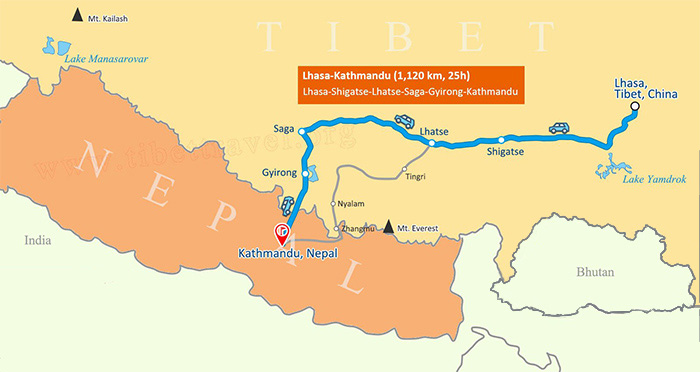 Follow the Sino-Nepal Friendship Highway for the cycling.
Follow the Sino-Nepal Friendship Highway for the cycling.
Day 4: Lhasa- Chushur - Bridge Brahmaputra - Khangbala Village(Ride 85km, 7 hrs)
Day 5: Khangbala Village - Khangbala Pass(4990m) - Yamdrotso Village(Ride 80km, 10 hrs)
Day 6: Yamdrotso Village - Nangartse - Karola Glacier - Ralung Village- Simila Pass - Gyantse (Ride 100km, 10 hrs)
Day 7: Gyantse - Pelnang - Shigatse (Ride 95km, 8 hrs)
Day 8: Shigatse - Phuntsoling Monastery (Ride 105km, 9 hrs)
Day 9: Phuntsoling Monastery to Latse (Ride 70km, 6 hrs)
Day 10:Lhatse - Gyatso la Pass (5248m) - Pelba (Ride 84 km, 10 hrs)
Day 11: Pelba - Himalaya Nature Reserve Entrance - Tashizong Village - (Ride 65km, 8 hours )
Day 12:Tashizong Village - Basom Village - Rongpuk Monastery - Everest Base Camp (5200m) (Ride 50km, 6 hours)
Day 13: Everest Base Camp - Old Tingri (Ride 86 km, 10 hrs)
Day 14: Old Tingri - Peikutso Lake (Ride 120km, 10 hrs)
Day 15: Peikutso lake - Gontala Pass (4750 m) - Gyirong Town (Ride 130km, 9 hrs)
Day 16: Gyirong Town - Nepal border, Take Jeep and drive back to Kathmandu(130km, 8 hrs)
What Is the Best Season for Lhasa to Kathmandu Cycling Tour
April to mid-June and September to October signal the best times for the Lhasa to Kathmandu cycling tour.
Weather: Spring and autumn bring mild temperatures and crisp air to Tibet, making it comfortable for cycling during the day. Days are generally sunny with clear skies, although occasional rain showers are possible, especially in June. Nights can still be chilly, especially at higher elevations, so you dress in layers and prepare a down jacket and sleeping bags.
View: The clear skies of autumn offer excellent visibility of the surrounding mountains, esp, unobstructed views of the Himalayan peaks, alpine lakes, and valleys.
Road condition: Away from the monsoon season (mid-June to the end of Sept.), the paved road condition is excellent for the Lhasa to Kathmandu bike tour with no landslides, rockfalls, or floods at the Sino-Nepal border. However, traffic is expected to soar during May Day and the National Day holiday in China. Further reading about the best time to visit Tibet.
Shall I Bring My Own Bike or Rent One for Lhasa to Kathmandu Cycling Tour
Well, it depends. If you have a high-quality, well-maintained bike and you are used to riding your own bike, bringing your own bike can provide a sense of comfort and familiarity during the tour.
However, if you're traveling from afar and don't want the hassle of transporting your own bike, renting a bike from your travel agency can be a great alternative.
As a local and award-winning local Tibet travel agency, we can offer you a variety of bike options, allowing you to choose a bike that is best suited to the terrain and conditions of the Lhasa to Kathmandu bike tour. Please feel free to inquire.
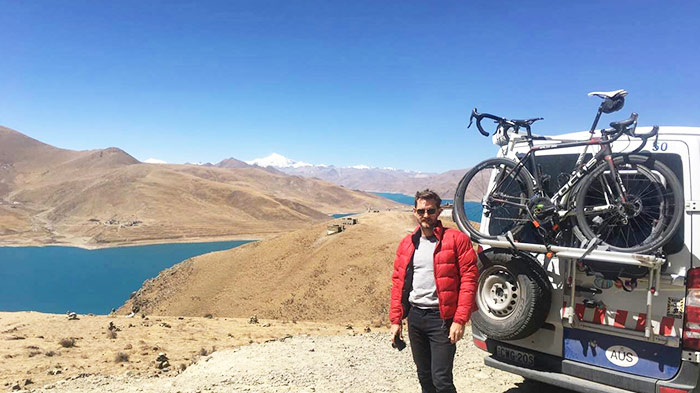 4+2 traveling mode gives you the best cycling tour experience in Tibet.
4+2 traveling mode gives you the best cycling tour experience in Tibet.
What to Eat for My Lhasa to Kathmandu Cycling Tour
Your Tibetan guide will take you to the local restaurants where you can embrace the local cuisine along the route for a taste of Tibetan and Nepali flavors; traditional dishes such as momos (dumplings), Thukpa (noodle soup), Tibetan noodles and yak meat dishes for a cultural culinary experience. Sichuan and Chongqing restaurants offering Chinese cuisine can also be found along the way.
In addition, when camping out in the wilderness with the guide, your guide or the cook will make homemade dishes, and noodles, and cook yak meat, and tasty Tibetan potatoes with vegetable soup for you. You may also taste local snacks along the way. It will be a great adventure for both your feet and stomach.
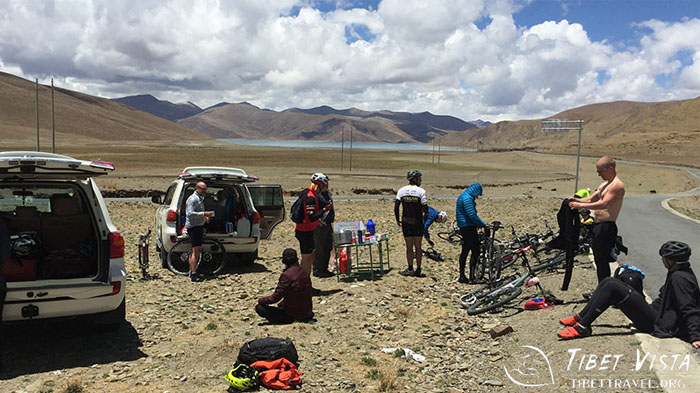 Our clients are preparing the lunch beside the highway.
Our clients are preparing the lunch beside the highway.
Where to Stay during the Lhasa to Kathmandu Bike Tour
No worries! You have a wide array of hotel options, ranging from guesthouses to Tibetan-style and 5-star hotels in Lhasa City and Shigatse City. As you cycle to remote , villages, counties and border areas, the accommodations are limited to 3-star hotels or basic /tented guesthouses. Sometimes, the guide and you will pitch camps and stay in the wilderness of Tibet.
You can ask your travel agent to book the hotels to your liking if it is available.
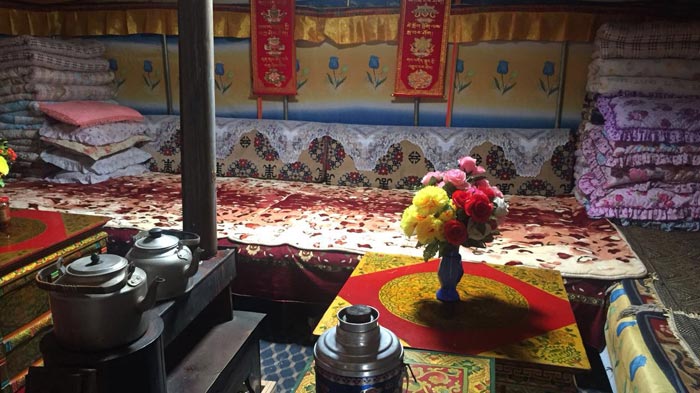 Stay overnight at EBC tent guesthous.
Stay overnight at EBC tent guesthous.
Is It Expensive for Lhasa to Kathmandu Bike Tour
Compared with normal small group tours in Tibet, where travelers can share the cost within the tour group, the custom Lhasa to Kathmandu bike tour is more expensive. Since you will have a private local Tibetan guide, a support truck with spare parts for the bikes, medical kits, camping equipment, cooking sometimes, and other logistics, bike rental, etc.
Besides, the cycling route tends to be far more flexible. The driver and truck in Tibet will charge based on the kilometers. So, all of these contribute to the higher cost of bike tours in Tibet.
However, a great workaround is that you can invite more cyclist friends or families to create a custom Lhasa to Kathmandu tour to make the cost more affordable to each one.
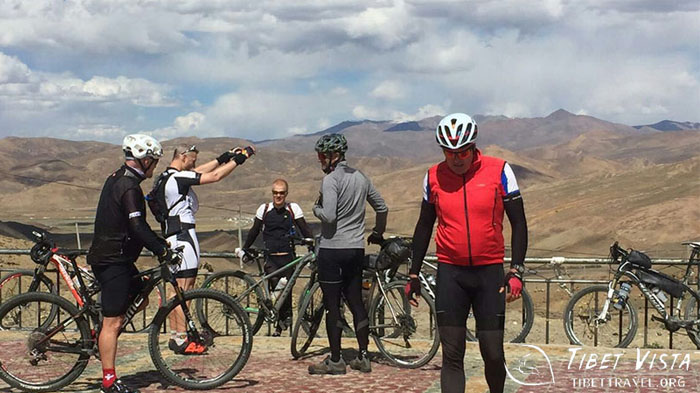 Having a rest at the viewing platform along the way.
Having a rest at the viewing platform along the way.
How Should I Prepare for Lhasa to Kathmandu Bike Tour
Well, physically, you can start training well in advance, for example, incorporate long rides, trekking, swimming, and hill climbs into your routine to to build endurance, strength, and cardiovascular fitness for the upcoming cycling at high altitude in Tibet.
Additionally, in terms of travel formalities, you are expected to get your Chinese Visa first and then email the images of your passport page and Chinese Visa page to us (at least 20 days before your departure to Lhasa) to apply for the Tibet Travel Permit for Tibet entry.
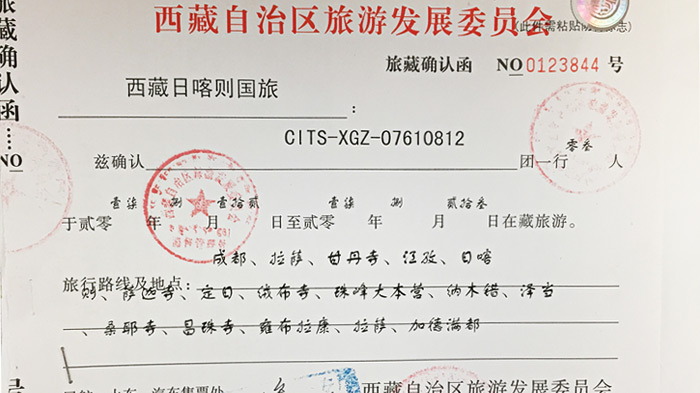 Tibet Travel Permit is an indispensable travel document for Tibet entry.
Tibet Travel Permit is an indispensable travel document for Tibet entry.
On top of that, you can check if there are discounted international flights to China and domestic flights available to Lhasa. The rest is for us to take care.
What Cycling Services Should I Choose for Lhasa to Kathmandu Cycling Tour
Firstly, you need to book your Lhsaa to Kathmandu cycling tour via a well-established and registered local Tibetan agency like us that can secure your Tibet travel permit and other travel documents needed and help you arrange flights, Tibet trains to Lhasa, hotels, etc. to ensure a safe and pleasant bike tour from Lhasa to Kathmandu.
Secondly, the cycling service should include a bilingual local Tibetan guide specializing in the bike tour from Lhasa to Kathmandu and offer you a cycling support trunk to accompany you along the route to provide logistical support, carry luggage, and offer assistance in case of emergencies or mechanical issues or cook, etc.
As a prestigious and local Tibetan agency recommended by Lonely Planet, we satisfy the above needs and offer you a worry-free bike tour service to fulfill your dreamed Lhasa to Kathmandu bike tour. Please feel free to inquire from our helpful travel agents.
Conclusion
In conclusion, cycling from Lhasa to Kathmandu promises an unforgettable adventure filled with stunning landscapes and cultural experiences. Ready to embark on this epic ride? Contact us now for a free inquiry and let's make your dream ride a reality. Cheers!

Jamyang Tsering, one of our senior travel guides, has a wealth of experience spanning nearly 20 years. Also a celebrated YouTuber for our Tibet Vista channel, Jamyang is genuinely enthusiastic about showing the REAL Tibet to both our customers and fans. It could be an interesting experience to explore Tibet with Jamyang.
Related Articles & Posts
Most Popular Tibet Tour Packages
-
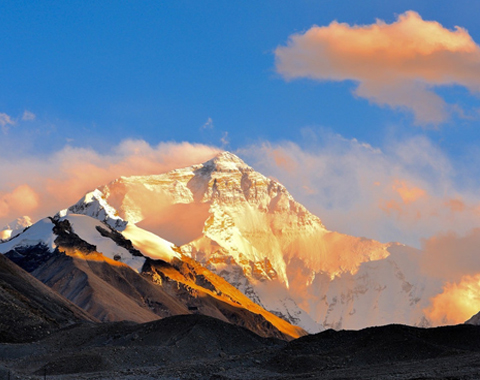
Lhasa - Gyantse - Shigatse - Everest Base Camp - Shigatse - Lhasa
USD939
View Details -
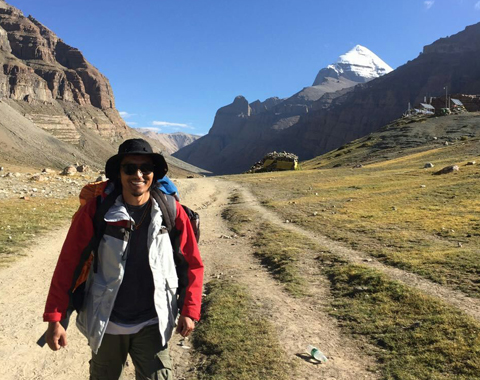
Lhasa - Gyantse - Shigatse - E.B.C - Saga - Kailash Trek - Darchen - Lake Manasarovar - Saga - Gyirong - Tingri - Lhasa
USD2059
View Details -
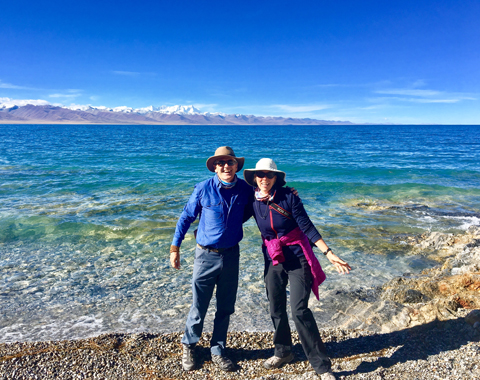
10 Days Lhasa to Everest Base Camp and Namtso Lake Small Group Tour
Lhasa - Gyantse - Shigatse - EBC - Shigatse - Lhasa - Namtso Lake - Damxung - Lhasa
USD1289
View Details -
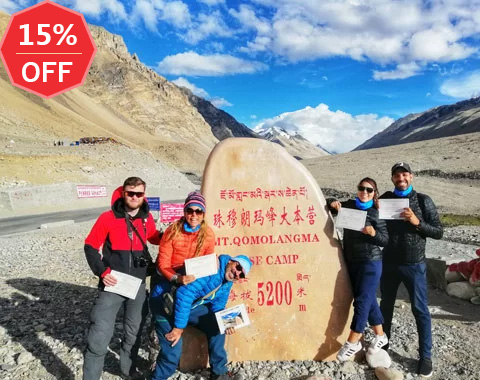
8 Days Driving Across Himalaya Overland Adventure from Kathmandu to Lhasa
Kathmandu - Gyirong - Everest Base Camp - Tingri - Shigatse - Gyantse - Lhasa
USD1069
View Details -
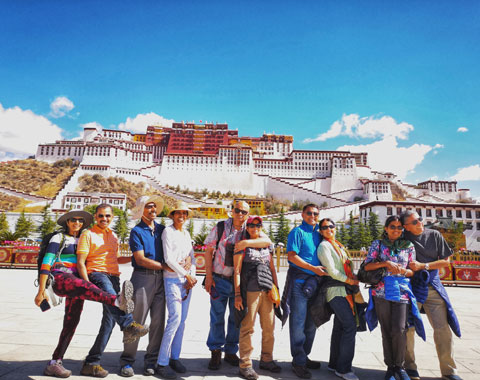
4 Days Lhasa Impression Small Group Tour: Explore the Heart of Tibet and Mingle with the Locals
Lhasa
USD509
View Details -
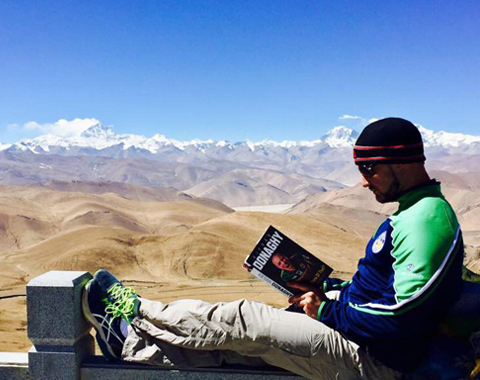
Lhasa - Gyantse - Shigatse - Everest Base Camp - Gyirong - Kathmandu
USD979
View Details -
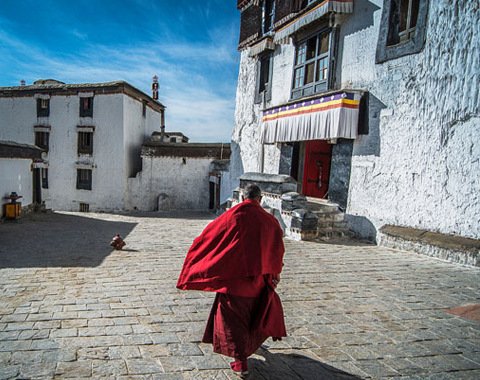
Lhasa - Gyantse - Shigatse- Lhasa
USD799
View Details -
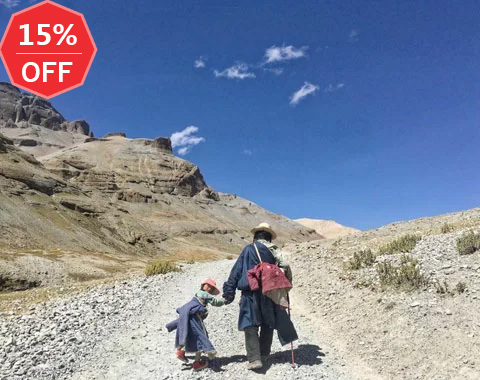
13 Day Lhasa, Mt. Everest, Mt. Kailash, Lake Manasarovar and Kathmandu Adventure Tour
Lhasa - Gyantse - Shigatse - EBC - Saga - Darchen - Kailash Trek - Darchen - Saga - Gyirong - Kathmandu
USD2059
View Details
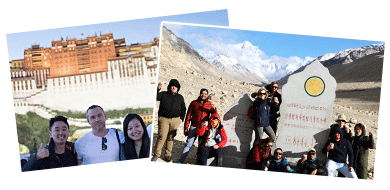

.jpg)



